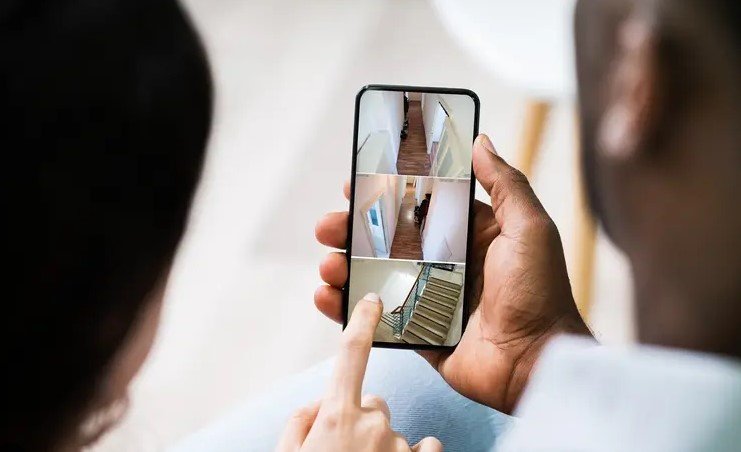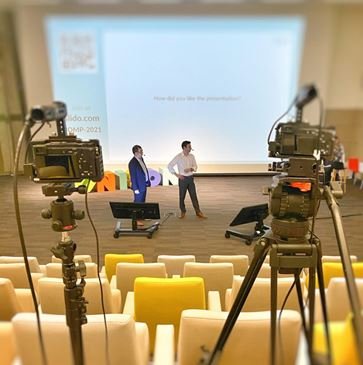How multimedia shapes virtual reality is a fascinating exploration of technology’s potential to create immersive and interactive experiences. Virtual reality (VR) uses multimedia elements—such as audio, video, graphics, and interactive features—to transport users into digital environments that feel lifelike. These multimedia components work together to engage multiple senses and shape how users interact with virtual worlds. As technology continues to evolve, multimedia’s role in VR is expanding, enhancing both its entertainment and practical applications.

The Role of Multimedia in Creating Immersive Experiences
How multimedia shapes virtual reality begins with creating fully immersive experiences that stimulate users’ senses. High-quality visuals and realistic sounds are key elements in VR environments, ensuring that users feel truly present in these digital worlds. Graphics in VR are designed with a high level of detail, using 3D modeling and animations to create lifelike objects, landscapes, and characters. This visual fidelity allows users to interact naturally with the environment, as though they were physically present.
In addition, spatial audio plays a crucial role in VR, providing directional sound that adjusts as users move through virtual spaces. Whether it’s the sound of footsteps behind you or the distant chatter of a crowd, multimedia elements like audio make VR experiences more dynamic and engaging. This combination of visual and auditory stimuli is essential in creating a fully immersive environment where users can lose themselves.
Interactive Multimedia Enhancing Virtual Reality
How multimedia shapes virtual reality also revolves around interactivity, one of the most important aspects of VR. Unlike traditional media, which is passive, VR allows users to interact directly with virtual environments. Multimedia elements like animated objects, responsive environments, and tactile feedback enhance these interactions, making them more engaging and realistic.
For example, VR systems often use motion tracking to capture users’ movements, allowing them to manipulate objects or move through spaces. These actions are made possible by combining multimedia components such as animations, textures, and sound effects that react to user input. This level of interactivity helps blur the line between the real and virtual worlds, offering users a more convincing and captivating experience.
Applications of Multimedia in VR
The impact of how multimedia shapes virtual reality can be seen across various industries. In entertainment, multimedia is used to create highly immersive video games and interactive experiences that allow users to explore virtual worlds or take on different roles. In gaming, VR combines lifelike graphics with responsive environments, bringing characters, landscapes, and actions to life.
Beyond entertainment, multimedia also shapes VR’s practical applications in fields such as education, healthcare, and business. For instance, in education, VR offers interactive learning environments where students can explore historical events, conduct science experiments, or visit different parts of the world without leaving their classrooms. Similarly, in healthcare, multimedia-enhanced VR is used for training surgeons by simulating medical procedures, allowing them to practice in a risk-free environment.
Enhancing Social Experiences with Multimedia in VR
Another dimension of how multimedia shapes virtual reality is in the realm of social interaction. VR allows users to interact with others in shared virtual environments, providing a new form of social media. Through avatars, users can attend virtual events, collaborate in meetings, or even explore virtual worlds with friends. Multimedia elements such as realistic avatars, interactive environments, and 3D audio create an enhanced social experience that feels more engaging than traditional online interactions.
For example, VR platforms like Facebook Horizon and AltspaceVR allow users to create virtual spaces, meet with friends, or attend events like concerts and conferences, all while interacting with multimedia-enhanced surroundings. These experiences are made possible through a combination of interactive multimedia features that mimic real-life social dynamics in virtual settings.
The Future of Multimedia in Virtual Reality
Looking ahead, how multimedia shapes virtual reality will only become more significant as technology advances. Future VR systems will incorporate even more sophisticated multimedia elements, such as enhanced haptic feedback, ultra-high-definition graphics, and more immersive audio experiences. This will enable users to experience VR worlds with an unprecedented level of realism and immersion.
Moreover, as VR becomes more accessible and integrated into everyday life, its use cases will expand beyond gaming and entertainment. Fields like virtual tourism, remote work, and telemedicine are expected to benefit from multimedia-driven VR experiences. This evolution will further cement multimedia’s role as the backbone of virtual reality.
Conclusion
In conclusion, how multimedia shapes virtual reality is integral to creating immersive, interactive, and engaging experiences. By combining elements such as high-quality visuals, spatial audio, and interactivity, multimedia elevates VR to new heights. Whether for entertainment, education, or social interaction, multimedia continues to enhance VR’s potential, offering users a more lifelike and dynamic experience. As technology evolves, multimedia’s role in shaping virtual reality will continue to expand, driving innovation and creating new possibilities for users in the digital world.











